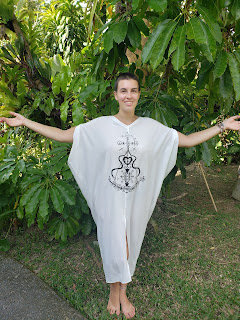Forget about Cotton, we could be making Textiles from Banana and Pineapple!
| A byproduct of the pineapple harvest can be turned into a material with a similar appearance to canvas. Photograph: Macduff Everton/ Macduff Everton/Corbis |
When I came across this article, I said " whoah it is something we in Haiti could have done and focus on". During the rainy season around Savane du Bois, Marigot a small community in Jacmel in the south east, the planters lost every year tons and tons of banana plantation. This is for that reason I was sent there to teach a group of 60 women on what to do with the banana bark and how to recycle it into usefull items. We have many different localities with the same problem here. Finding this article my head is spinning with ideas regarding the banana stems, pineapple leaves and the coconut husk. But where to go and who to approach for something so great, that can be so helpful for the country and the people???
Cotton makes up a third of fibre consumption in the textile industry, according to a global apparel fibre consumption report (pdf) published in 2013. The cotton production industry is labour intensive and involves a lot of sweat, chemicals and fresh water.
Banana stems
Around a billion tonnes of banana plant stems are wasted each year, despiteresearch indicating that it would only take 37kg of stems to produce a kilogram of fibre. In 2012, the Philippine Textile Research Institute concluded that banana plantations in the Philippines alone can generate over 300,000 tonnes of fibre.
Eco-textile company Offset Warehouse recognises the banana’s potential and currently partners with an NGO in Nepal to ensure banana fabric production supports the artisan sector by relying on local skills, and that workers are paid fairly and operate in safe conditions.
The fabric is claimed to be nearly carbon neutral and its soft texture has been likened to hemp and bamboo. Offset Warehouse’s founder Charlie Ross says the material is perfect for jackets, skirts and trousers.
Pineapple leaves
Frustrated by the heavy use of chemicals in the leather tanning process, Carmen Hijosa, founder of Ananas Anam, developed Piñatex as an alternative to it and petroleum-based textiles.
“The greatest thing about Piñatex is probably that it’s made of leaf fibres … a byproduct of the pineapple harvest,” says Jaume Granja, a member of the Ananas Anam team, referring to the fact leaves are usually left to rot in the ground. “Our leaves do not need any additional land, water or fertilisers to grow.”
Making the material also brings benefits to the farming communities. The industrial process used to create Piñatex produces biomass, which can be converted into a fertiliser that farmers can spread into their soil to grow the next pineapple harvest. The material, which has similar appearance to canvas, is also biodegradable; Hijosa and her colleagues are working on a way to ensure that the coating is sustainable and toxic-free.
It’s likely to be some time before the material (note: Piñatex is different from piña, where fibres are combined with silk or polyester) will be found in shops, but initial prototypes show that, just like leather, it can be used to manufacture goods including shoes and handbags. The wait might be worth it – at £18 per metre, it would be roughly 40% cheaper than good quality leather, which can be priced at around £30.
Coconut husks
The humble coconut palm is often referred to as the ‘tree of life’, but its value goes beyond its meat, milk and water. The fruit’s husks have fibrous qualities. A thousand coconuts can produce 10kg of fibre, and there’s usually a harvest every 30-45 days.
Outdoor clothing companies Tog 24 and North Face are two brands adopting cocona – a textile operating under the name 37.5 Technology that is produced from a combination of coconut shells and volcanic materials – and becoming less reliant on synthetic materials as a result. For instance, Tog 24 jacket, Siren, is 55% polyester and 45% cocona. A spokesperson for 37.5 Technology says that the material is a particularly good choice for sportswear as it’s designed to improve performance.
Fibres from husks can also be turned into biowaste-based charcoal to be used by farmers as an organic fertiliser, as has previously happened in the Maldives. This could help improve soil quality, reduce pesticides and ensure that any coconut inspired fashion supply chain is circular.
|


Comments